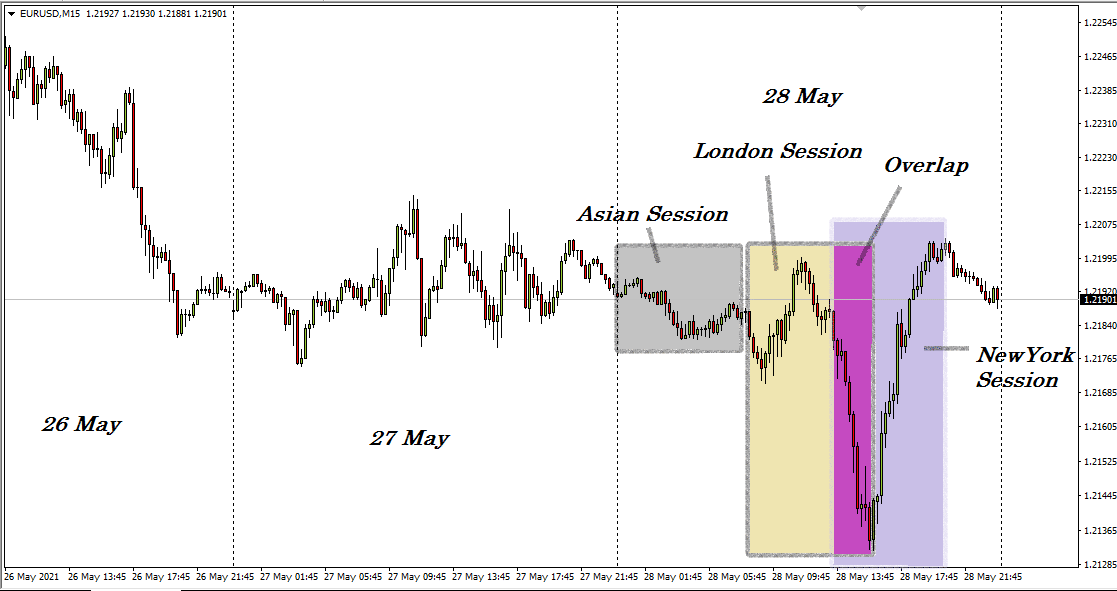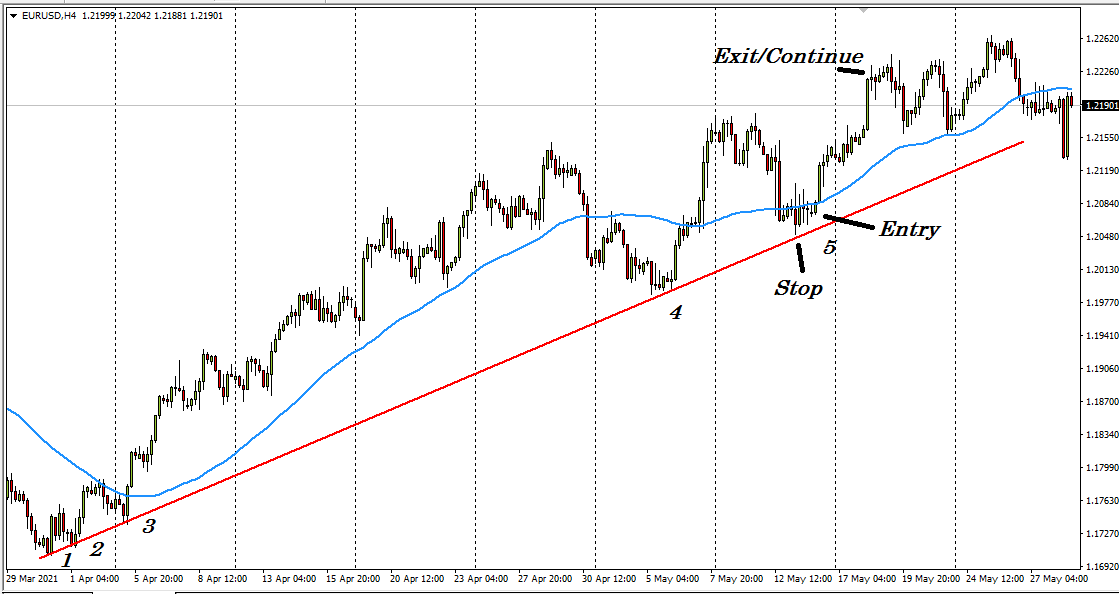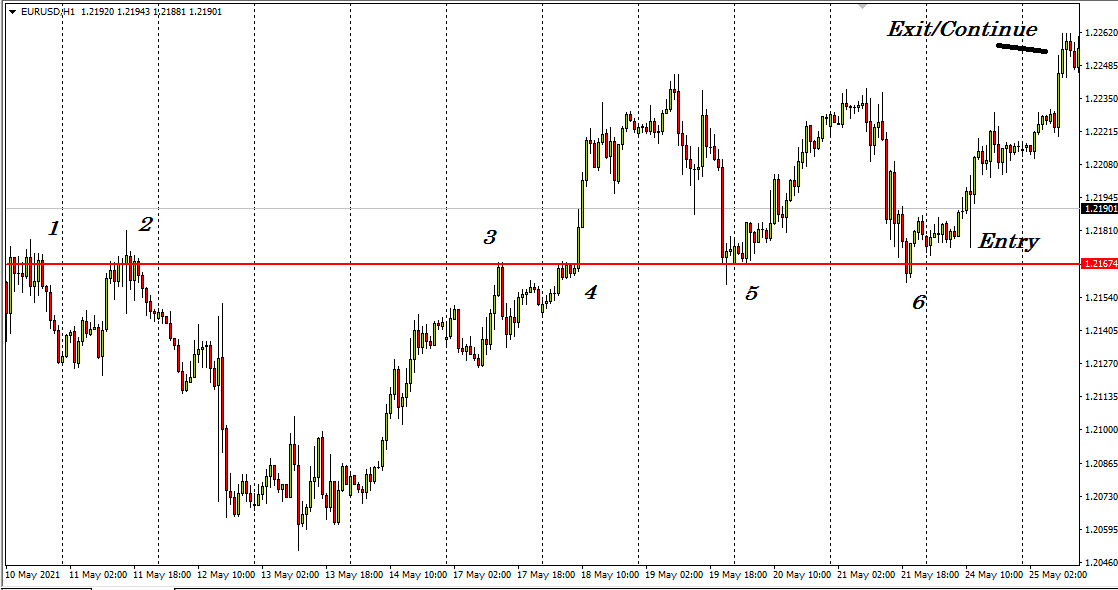FX is the largest financial market in the world that involves trading currencies. Here, trading happens with two currency pairs, known as the base and quote currency. When the base currency is stronger than the quoted currency, the currency pair’s price movement is upward and vice versa when the base currency is weaker than the quoted one.
Many factors affect the price movement in the FX as changing price depends on, strength and weakness of both participant currencies of any specific pair. The USD is the most significant participant in the FX as outside the US, it is known as the world’s reserve currency. Any currency pair with the involvement of USD is known as a major currency pair, and without the insolvency of USD, any other pair known as cross pairs.
Among the major pairs, EUR/USD is the most traded pair globally. This article will give you a complete guide about the basics of these currencies, why it is different from other pairs, and the three best ways to trade this pair.
Why is EUR/USD different from other currency pairs?
The currency pair EUR/USD represents the euro vs. dollar exchange rate, where the USD is the dominator or quote currency. In that case, the euro is the base currency or numerator.
We can separate forex pairs in two ways:
- Direct quotes
- Indirect quotes
In a direct quote, the local currency is the quote, while foreign currency is the base. Meanwhile, an indirect quote scenario is the opposite, foreign currency is the quote currency, and local currency/domestic currency is the base currency.
Most other countries use direct quotes against USD, while Europe, Canada, Australia, and the UK prefer indirect quotes. Even though nearly 89% of currency trades worldwide involve USD, many majority pairs list USD first, the pair EUR/USD is always quoted indirectly.
The euro was introduced as an accounting currency back in 1999 and started to replace the currencies of most member countries. Then it becomes the second most traded currency in the world besides the USD.
Moreover, the EUR/USD pair is the most traded currency in the world. We can easily show the EUR/USD as USD/EUR because there are no strict rules to determine any currency pair directly. When the euro is stronger than the USD, this pair moves upwards and vice versa when the USD is more robust.
Three ways to trade EUR/USD
This part will discuss the best or most preferable way to trade EUR/USD based on previous performance and profitability.
Intraday trading in London session
The FX is a 24 hours market where you can place a position anytime you want during the week’s five trading days. Smart traders always want to enter the market in time to increase their profitability.
The ideal time to trade this way is to present in front of the chart just before one hour of London opening, at the end of the Asian session. The London session begins at 8:00 am GMT. The elite traders who trade London sessions are always in front of the market before an hour of London opening (GMT 7:00) and check the movement till 8:00-9:00 am GMT.
On your chart, you can find out that volatility starts just 30 mins before London opens most of the trading days in a stable market.

As the chart above shows, the price movement of EUR/USD pairs in the last three days.
- The price fell from somewhere on 26 May and stayed sideways during the whole day of 27 May.
- Look at the 28 May chart.
- Price slipped below 27 May low at the start of the London session, then started going upward but never chased yesterday’s range.
- It is a preferable place to put sell orders and continue till the session ends.
As simple as that, find out the trend and put an order. This session is essential as the banks and financial institutes enter the market, creating volatility in the price movement.
Swing trading using price action
The EUR/USD pair moves nearly 60 pips daily on average. So often, the market structure of price movement gives opportunities to enter at swing positions. Swing trades are those types of trades that give big rewards with low risks.

The chart above shows the 4-hours price movement of EUR/USD.
- The price remains on an uptrend of several weeks.
- After making several higher highs, the price takes some retracement at the downside and touches the trendline at point 4.
- Then again makes another higher high that confirms the trend remains intact.
- When the price touched the trendline at point 5, the place to place a buy entry continues until the trend remains intact or exits at a suitable price with profit.
- Another technical indicator, SMA (50), confirms the price is on an uptrend.
Technical & fundamental mixture
The final trading strategy of today will show you the event level entry. Look at the chart below.

It is an hourly chart EUR/USD which shows the price movement from 10-25 May.
- During these 15 days, the price touched near the 1.215 level several times.
- This level worked as a support and also as a resistance.
- The price crossed this level on 18 May, before that it stayed below this level.
- After crossing it, the price gets back to it the next day (19 May), but the support remains intact, so the price declines to come down.
- Then again, at point 6, when the price retests the entry point, the stop loss will be below the support level with a 1:3 risk ratio order.
Besides taking entries from technical analysis. Observe the top four fundamentals of the market: interest rate, CPI inflation, GDP, and retail sales. If the EUR is stronger based on these events, consider buying trades only.
Final thought
There is no such crystal or ‘Holy Grail’ thing in forex trading. Price moves with currency’s strength and weakness. So we suggest trading using proper money management and trade management.
You must backtest your strategy in the demo account before applying that to the trading account. Avoid trade during trend-changing fundamental events like interest rate decisions, policy changes, GDP, employment data, etc.




